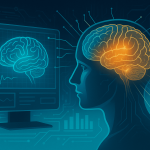
SAP AI Strategy Enterprise Advances and Developer Tools
The SAP AI strategy is centered on blending artificial intelligence directly into enterprise development and data operations. In the first place, this approach is about making technology work closer to how real businesses function. Instead of adding AI as something extra, it becomes part of processes, tools, and decision making. This shift helps teams work smarter and respond faster to changes.
Understanding SAP AI Strategy Core Foundations
At its core, the SAP AI strategy emphasizes unifying systems that businesses already use. Many companies struggle with disconnected software and data scattered across platforms. By building seamless integration, SAP reduces duplication and manual effort. Teams benefit from automated insights rather than sorting through reports.
Developers, analysts, and operations teams all draw from the same information source. This lowers friction and keeps everyone aligned. It also supports adapting faster to new market needs without major rebuilds.
For related guidance, see our internal article on Optimizing SAP Workflows.
Enhancing Developer Tools with SAP AI Strategy
One of the standout elements of the SAP AI strategy is how it supports developers. SAP Build now works smoothly with tools like Visual Studio Code. This means developers can add intelligent features exactly where they already work.
A workspace extension allows creating logic blocks, testing ideas, and deploying features in fewer steps. There’s also Joule Studio, which lets teams create custom AI-driven assistants. These assistants can monitor sales, supply chain, or finance operations and deliver alerts or recommendations.
Helpful resources:
-
SAP Developer Resources: https://developers.sap.com/
-
VS Code Extensions Marketplace: https://code.visualstudio.com/docs/editor/extension-marketplace
This makes the development cycle faster, more intuitive, and less repetitive.
Data Integration Under SAP AI Strategy
Data sits at the heart of real decision-making, which is why the SAP AI strategy focuses heavily on strong data connections. SAP Business Data Cloud now links with major players like Snowflake and Databricks. These integrations allow businesses to share, combine, and analyze large amounts of structured information.
Another improvement is the enhanced HANA Cloud knowledge graph. It automatically maps how data points relate to each other. For example, a logistics manager could spot shipment delays based on weather, supplier activity, or inventory levels—all in a single interface.
This turns raw, scattered information into clear, useful business insight. It also keeps compliance and governance policies intact.
For an internal deep dive into data models, see SAP Data Integration Best Practices.
Business AI Models in SAP AI Strategy
Among the new models introduced through the SAP AI strategy, SAP-RPT-1 stands out. It focuses on structured business data like supplier records, invoices, and workflow histories. Unlike typical conversational models, this one predicts outcomes such as delays, payment risks, or demand fluctuations.
The model can be tested in a controlled environment and then applied to daily operations. Because it learns from real data structures instead of general text, its accuracy aligns closely with enterprise workflows.
Detailed product documentation is available directly from SAP.
This makes forecasting more realistic and useful for planning.
Future Outlook of SAP AI Strategy
The future of the SAP AI strategy looks toward emerging technologies. Partnerships with IBM are exploring quantum computing to solve extremely complex problems faster. Meanwhile, embodied AI and robotics are being tested to connect software intelligence to physical environments.
Imagine warehouse bots re-routing themselves in real-time based on SAP inventory records. Or quantum-driven analysis optimizing production costs across global supply chains. These aren’t distant ideas—they are currently in pilot exploration phases.
Forward looking companies should watch closely, as the next few years will expand what AI can automate and solve.
Benefits and Adoption of SAP AI Strategy
Companies adopting the SAP AI strategy are seeing clear gains. Efficiency increases as repetitive work becomes automated. Teams make decisions based on connected data instead of isolated reports. Collaboration improves because information becomes shared rather than siloed.
Adoption typically follows these steps:
-
Review current workflow gaps
-
Select the appropriate AI-enabled tools
-
Deploy in phases rather than all at once
-
Train teams to build familiarity
Even small changes, such as automated alerts or integrated dashboards, create meaningful improvements.
Challenges in Implementing SAP AI Strategy
No approach is completely seamless, and the SAP AI strategy has considerations to manage. Data privacy requires strong governance. SAP includes built-in controls, but organizations still need to review regional and industry regulations.
Ethical design matters as well. AI predictions should support fairness and prevent biased outcomes. This is why training resources and oversight roles remain essential.
Automation integration may feel complex at first, but available extensions and templates reduce the learning curve. Over time, workflows become smoother and results become easier to measure.
Conclusion
The SAP AI strategy represents a significant step in making AI part of everyday enterprise operations. By improving development tools, connecting data environments, and enabling predictive intelligence, it gives organizations new ways to stay competitive. As the field evolves, staying proactive, learning continuously, and adopting tools gradually will help teams move forward confidently.
Author Profile

- Online Media & PR Strategist
- Hello there! I'm Online Media & PR Strategist at NeticSpace | Passionate Journalist, Blogger, and SEO Specialist
Latest entries
 ColocationNovember 12, 2025Colocation Security Model Implementation
ColocationNovember 12, 2025Colocation Security Model Implementation Artificial InteligenceNovember 7, 2025SAP AI Strategy Enterprise Advances and Developer Tools
Artificial InteligenceNovember 7, 2025SAP AI Strategy Enterprise Advances and Developer Tools Scientific VisualizationOctober 29, 2025Federated Learning Technology in Medical Privacy AI
Scientific VisualizationOctober 29, 2025Federated Learning Technology in Medical Privacy AI Scientific VisualizationOctober 29, 2025Brain Visualization Ethics: Balancing Innovation and Privacy
Scientific VisualizationOctober 29, 2025Brain Visualization Ethics: Balancing Innovation and Privacy

